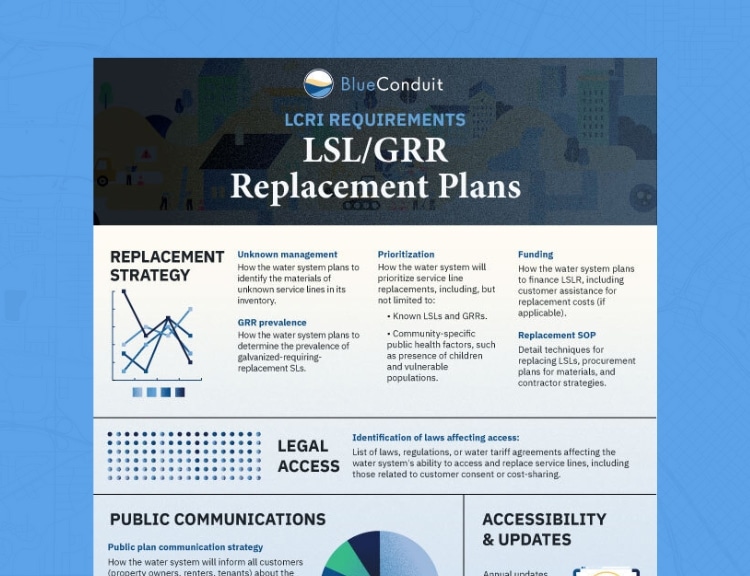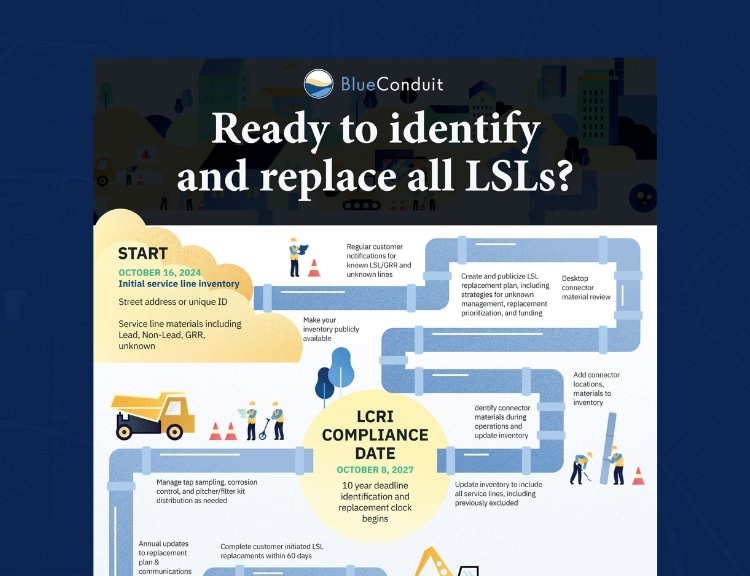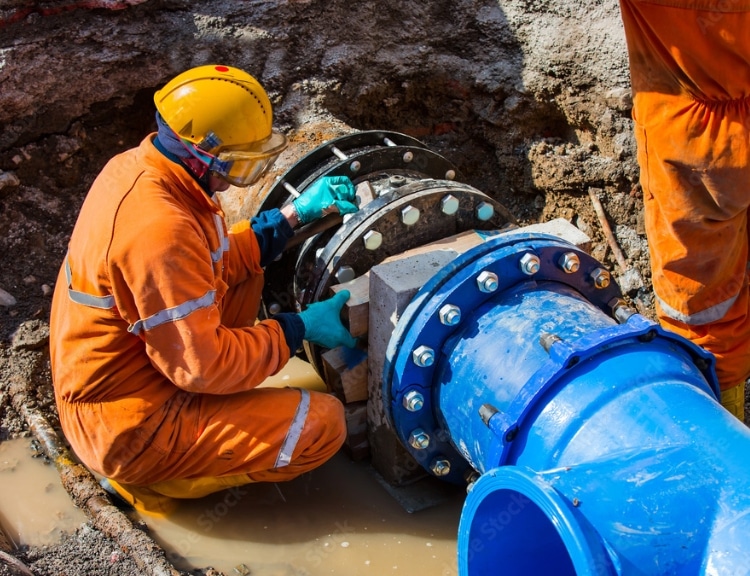Take control of lead service line replacement with data-driven solutions
Navigating lead service line (LSL) replacement can be tricky, and there’s little room for error when it comes to time and cost.
BlueConduit’s LSL Replacements makes the process easier by layering critical data onto your service line inventory data. Our intuitive tools help you build prioritized, compliant, and efficient replacement strategies that are customized to fit your community’s specific needs.
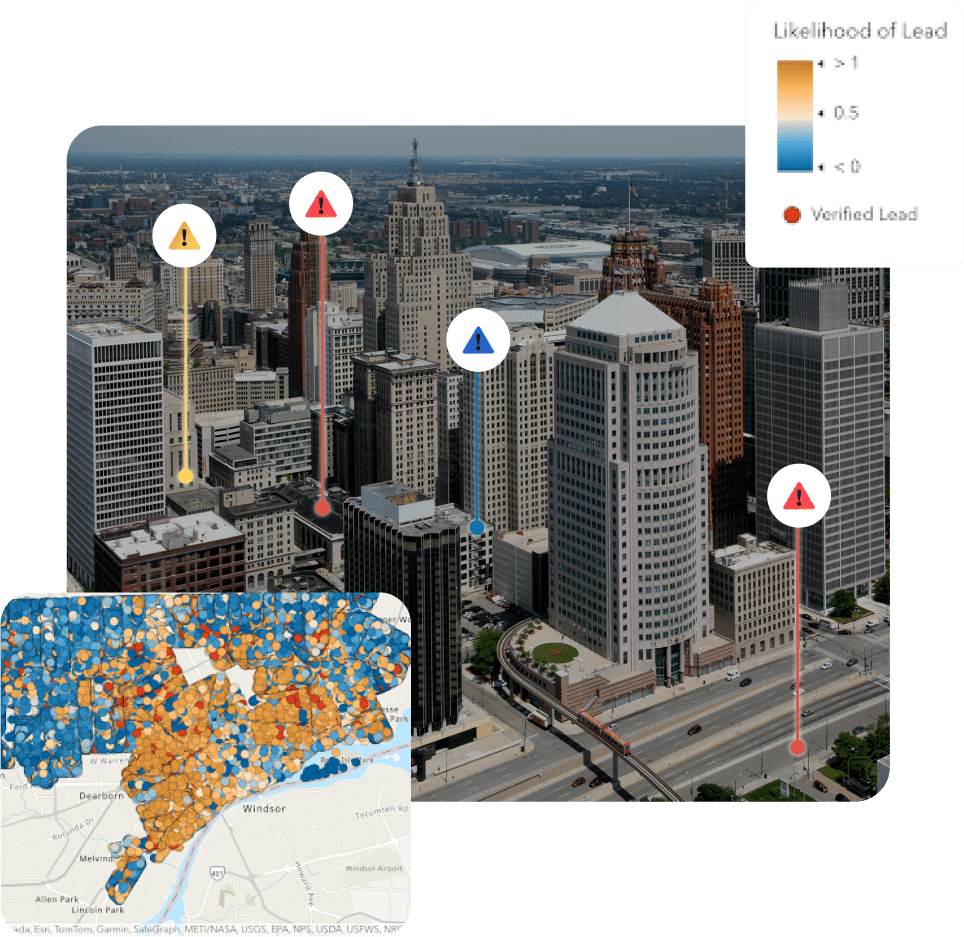
From guesswork to game plan
Many utilities struggle with incomplete data, limited resources, public pressure, and no clarity on where to begin when it comes to LSL replacement. Effective replacement requires more than guesswork – it demands accurate, cost-effective strategies that ensure compliance with the Lead and Copper Rule Improvements (LCRI). That’s where we come in!
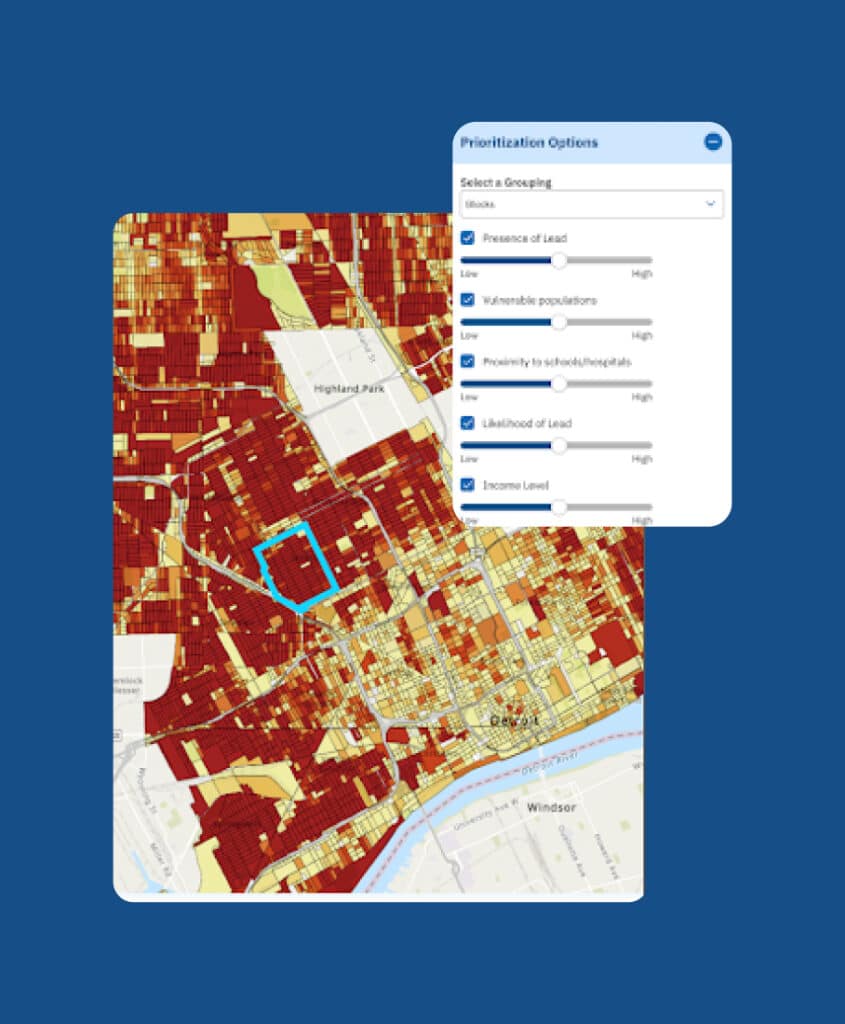
Our solution: BlueConduit’s AI-enabled prioritization tool
BlueConduit leverages AI and advanced data analytics to optimize replacement planning according to your unique needs. By integrating directly into Esri and asset management tools, our software empowers utilities and engineering firms to generate LCRI-compliant, prioritized, field-ready replacement plans.
With BlueConduit, you can:

Enhance
Upgrade your dataset with public health data, including presence of children and Environmental Justice Index (EJI). If you need it, we can also fill in the gaps in your service line inventory data with lead likelihood predictions.

Prioritize
Create customized replacement lists based on multiple datasets from public health risk to demographics, weighted to your community’s needs.

Group & Select
Group replacement efforts by street, block, or neighborhood for streamlined operations. Then, quickly select where you’d like to begin.

Plan
Activate replacement selections directly within Esri and other asset management tools.

Track & report
Monitor progress with dynamic dashboards and easily report on your LSL replacement strategy.
Together, these tools help you take the guesswork out of lead service line replacement, ensuring a faster, more efficient path to safe, clean drinking water for your community.
Case studies & success stories
Real-world results speak for themselves:
case studies - South Bend, IN
"We are excited to work with BlueConduit’s service line predictions platform to identify where lead service lines exist so we can proactively educate our customers and develop a plan to replace them.”
Michelle Smith
Director of Water Quality, South Bend Utilities
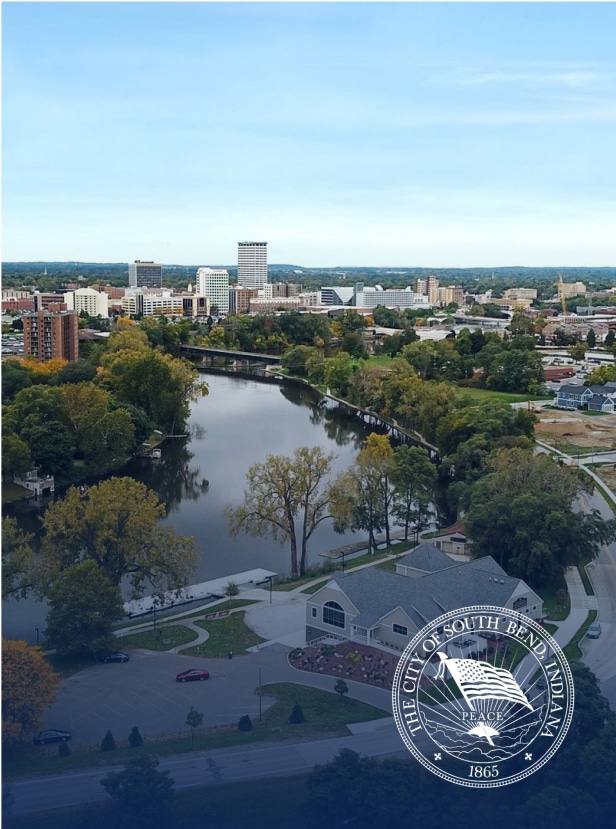
case studies - Detroit, MI
- 75% faster: Cut a 40-year plan to 10 years.
- Data-driven focus: Pinpointed high-risk communities with AI.
- Optimized results: Reduced LSL estimates from 120K to 80K.

Case Studies - Flint, MI
Played a pivotal role in addressing the Flint water crisis by prioritizing high-risk areas.
- [BlueConduit support] allowed officials to send replacement crews sooner to homes with the highest risk of having lead pipes, reducing the total number of days that residents lived with a lead-tainted water supply, and minimizing the public health consequences.
- The estimated cost for a successful replacement when using the BlueConduit tools to guide replacements was 75% less than when the city used a national engineering firm.
- Estimated to have saved the city ~$11M in replacement costs

Testimonials - Detroit, MI
Bryan Peckinpaugh
Public Affairs Director for the Detroit Water and Sewerage Department
More from the Blog
Ready to take control of your LSL replacement strategy?
Book a demo today and see how BlueConduit can help you save costs, streamline operations, and improve public health.

